What We Do About Production Problems
By definition, a custom CNC shop will have production problems, it simply goes with the territory so in this CNCROi.com blog post, I’ll outline a situation that arises every once in a while and what we do to fix it.
This is also among the last videos I’ve made in our old shop, new layout and background after we are done setting-up!
Different materials have different capacities for production issues, with stainless steel, it’s the focus that’s absolutely critical to get right while with wood, it’s masking that sometimes raises. These aren’t world ending issues but when they happen – and they WILL HAPPEN – there are several ways of fixing the result but sometimes it’s just more efficient to redo a project from scratch.
Please note these issues have nothing to do with our Austrian industrial wide-format laser, it’s generally related to materials.
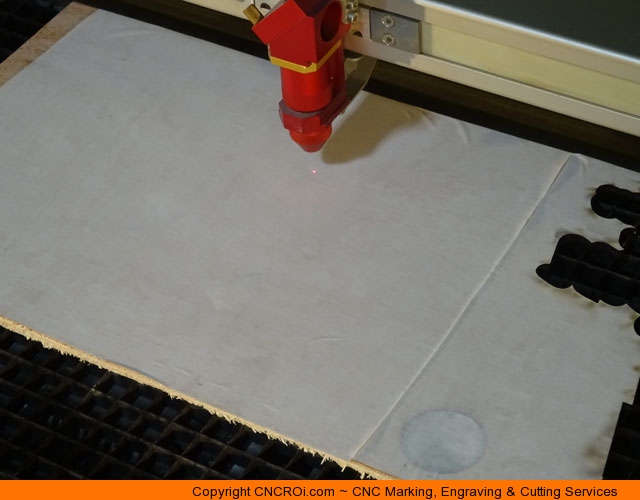
With the vast majority of our wood related projects, we use protective masking. This means the smoke and resins that fall back onto the work piece go onto the masking and not the wood, this is a double-edged sword though, as you’ll see. It also sometimes collects and concentrates the fumes should it raise.

In this case, we’ll use a case study of a custom wedding cake topper to show what can go wrong. In this case, a small piece of masking that raises-up – something that nothing can be done about – during production. The reason why this happens sometimes is due to the fact that the masking is only somewhat tacky, meaning you don’t want it to totally stick to the underlying material so it’s easy to remove but you still need it long and strong enough not to raise during production. It’s a very fine line.

The raising of the overlayed protective tack paper on this custom wedding cake topper can happen at any time, it’s not a common situation but it does happen. Why does it raise? Because we have a gas kit pushing air down onto the piece to prevent flames and smoke setting onto the lens or overhead gantry along with a strong extraction system.
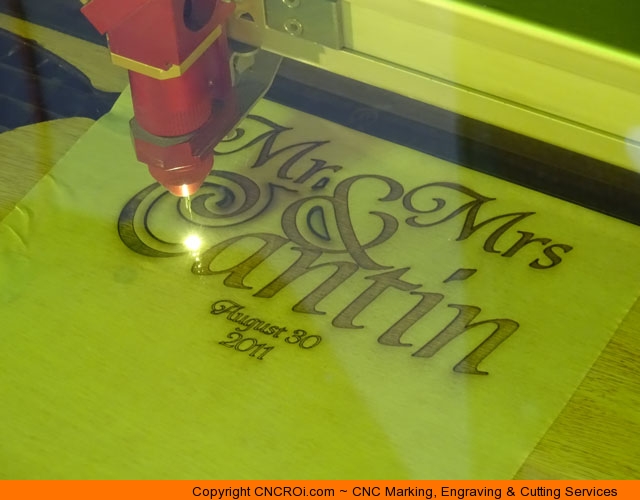
Sure, we could disable the gas kit during any aspects of production which would mean the paper an’t raise-up but then we end-up with a very gunky and dirty machine – and you will STILL have smoke and resin damage to the piece so that isn’t a solution.
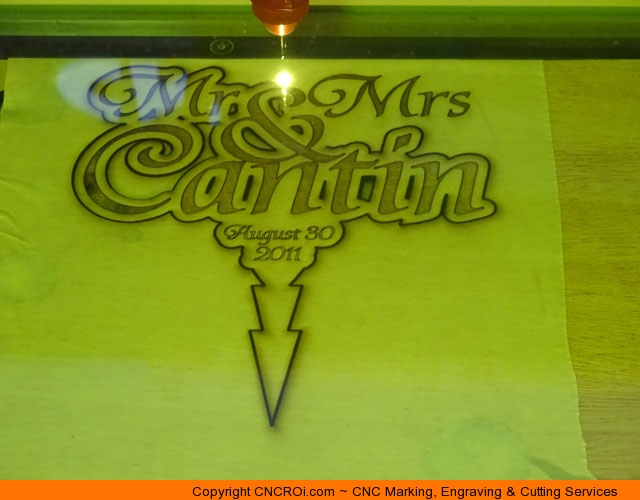
After engraving the design on this birch plywood, our CNC laser cuts the inside parts then the outside. The reason for this is to maintain accuracy and repeatability of the results, cutting a piece OUT first then the inside parts and engraving will mean precision is lost. The longer the model is part of the whole block, the more control over movement we have.
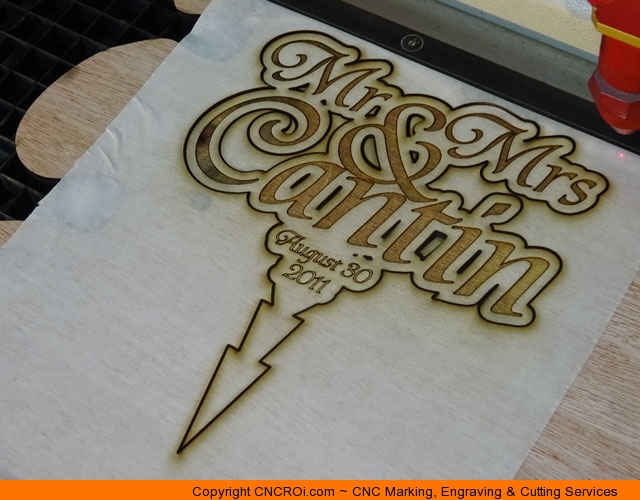
All the smoke and resin that set onto the masking paper in the picture above and below would have been on the work piece that are nothing but trouble. Sure, we could and have sanded the surface but some of these resins are sticky which stick to sand paper and actually spread this resin around the piece rather than sand it off.
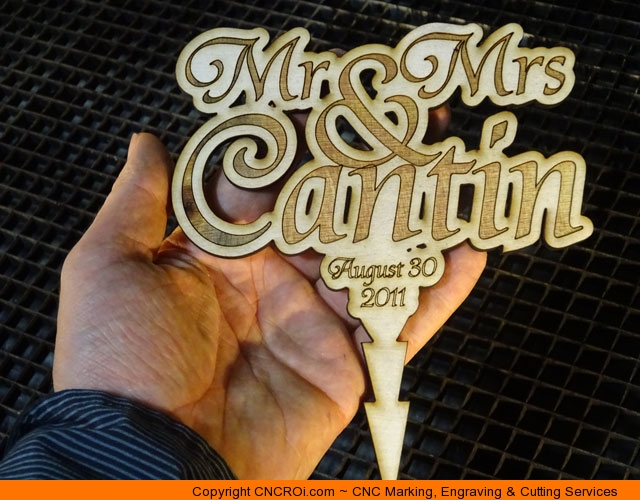
As you can see from the above, the masking looks perfect, nothing raised… but then you peel it away and you see the resin was redirected to the top of Mrs. This can be touched-up using sand paper but you also see the “C” in Cantin isn’t very attractive either, these are two strikes that mean this will go in the fire pit and not the customer’s wedding cake.
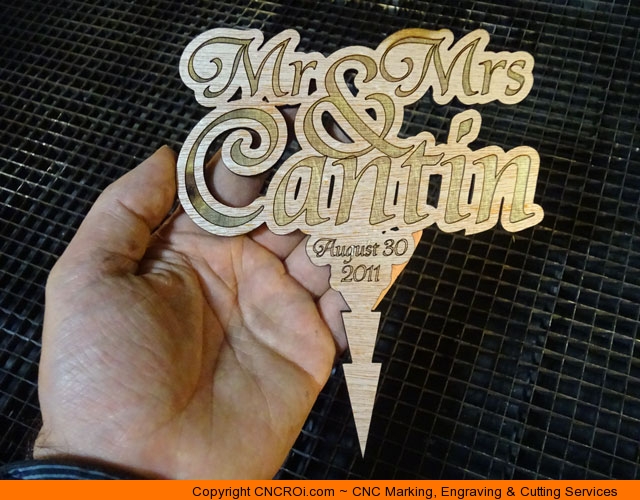
The above reject shows two problems that can happen with plywood, there is no way to fix the discoloration and this wouldn’t have been known before production either. This wood blemish could have been anywhere, it just happens to be at a location that makes the finished piece not up to our standards as a custom wedding cake topper.
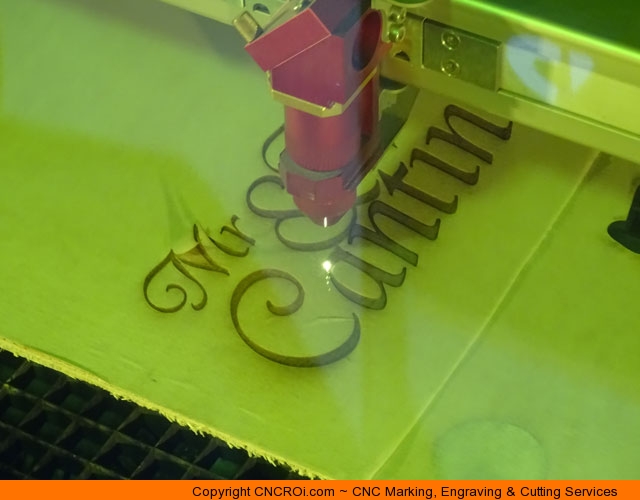
Sometimes, the protective wrapping on the surface lifts in more obvious ways, as you can see in the above picture, the middle part of “Mr.” is raised. Stopping production makes no sense as there is a possibility that nothing will build-up there as much as something a lot will build… there is no way of predicting the results so we might as well let our industrial CNC laser finish the job and see if what it makes is good or bad.
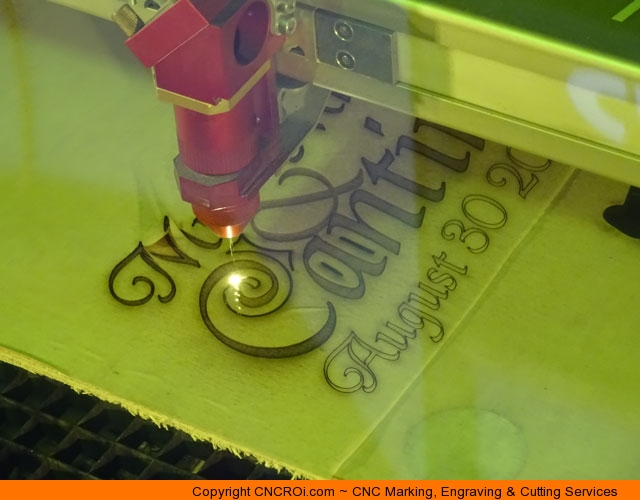
Engraving generally produces very little smoke or resin compared to cutting through. We could have paused the job and tried to push the masking back down, but even if we did this, the process MAY move the work piece a mm or more out of alignment, meaning the whole things it off kilter, which means automatically rejected.
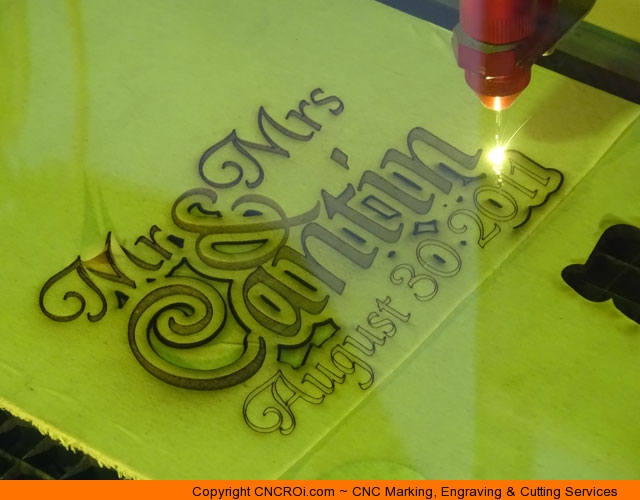
I often tell customers that our CNC laser has an incredible ability to find material faults, what looks entirely consistent and nice, once touched by the laser, reveals some defects. Again, we cut out the inside then outside of this custom wedding cake topper.
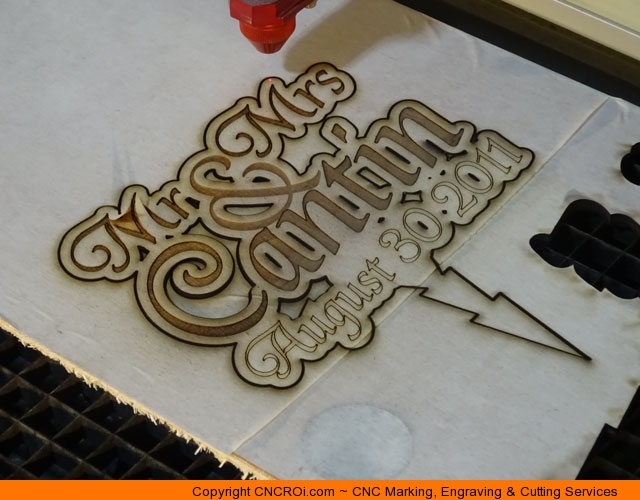
As you can see from the above picture, a “problem in production” actually produced NO PROBLEMS AT ALL. The “Mr.” looks perfect so doing anything during production would have caused problems where none really existed… but again, there is no way of knowing either way before production is done and results reviewed.
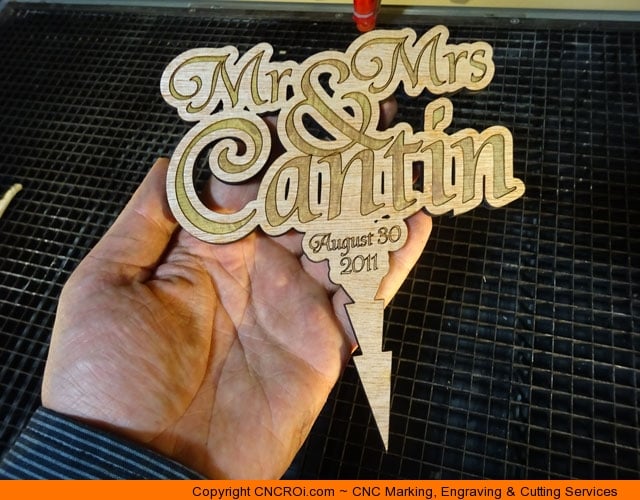
Comparing the two wedding cake toppers, on the right you see smoke and resin stains while during production, there was no hint that this may occur while on the left, we saw a problem during production where it had no effect.
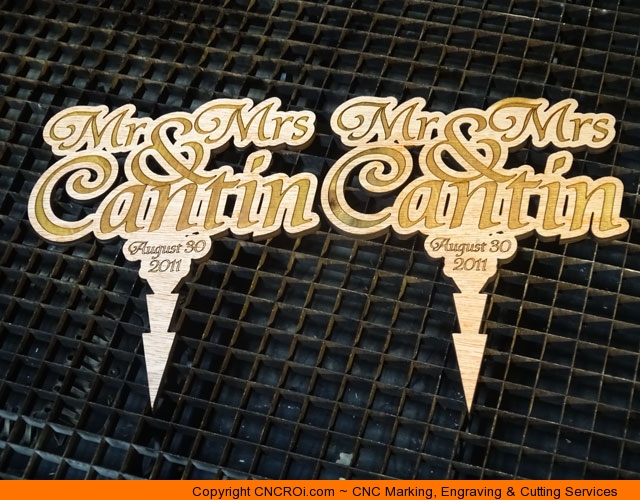
The knot discoloration on the right could have just as easily been on the left custom wedding cake topper, that’s how much randomness occurs with a custom CNC shop. In this case though, if it was ONLY the knot, it would be rejected but the stain on the top could have been easily sanded away.

I hope this blog posts give a glimpse as to what goes right and what can go wrong with making custom work – each material has their own quirks and things to watch for. The great thing about these production issues is that they are material or design related, NOT MACHINE RELATED. I bought a premium CNC laser because I wanted the problems in the shop to be material related, not machine based.
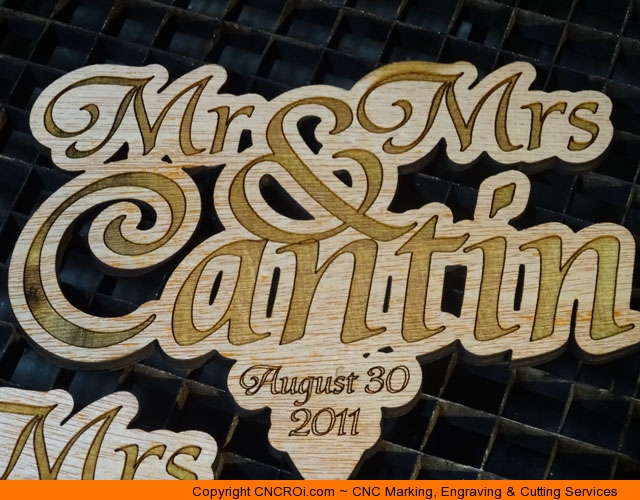
Looking for a custom CNC shop to make custom wedding cake toppers through 3D assemblies and lamacoids? Contact CNCROi.com today!